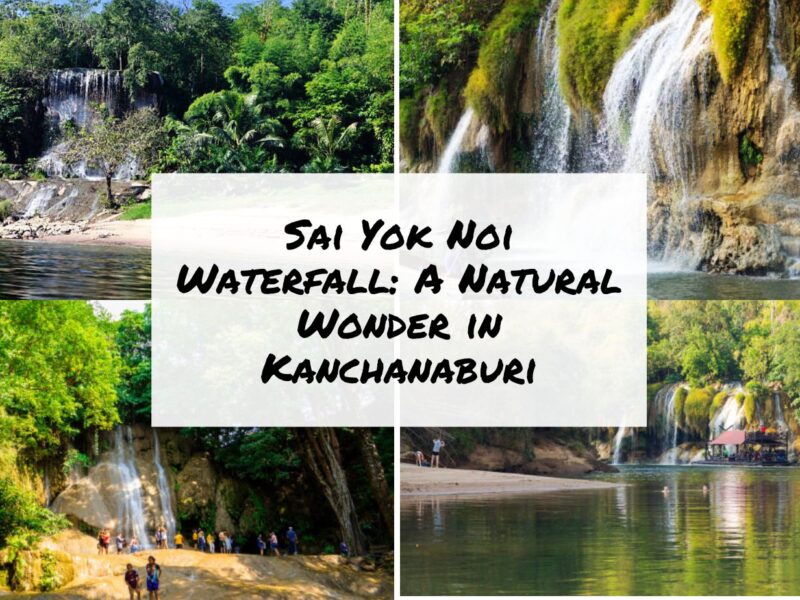Thailand is a country that is well-known for its stunning natural scenery. Visitors come from all over the globe to see Thailand’s diverse and distinct natural resources. Some of these natural resources are the beautiful streams of Erawan Falls in Kanchanaburi and the limestone islands that rise from the green seas of Maya Bay.
Even while the tourism sector is an important contributor to the overall economy of the country and plays an essential role in the economies of prominent tourist destinations, fame may often come at a cost.
The significant increase in the number of tourists, both domestic and foreign, has had a detrimental effect on the natural habitat. The rise in tourism has, in some places, outpaced the capacity of available resources to accommodate the growing number of tourists. In some areas, attitudes throughout the world have shifted regarding behaviors that were once widespread, such as the use of plastic straws for sanitary purposes; Thailand has joined the efforts of the rest of the world in this regard.
Organizations all around Thailand have long since set their eyes on sustainable tourism as a way to look toward the future with a forward-thinking vision to conserve the beauty that has made Thailand a worldwide tourism destination. Many different tourism-related activities have benefited from ecological preservation measures that have been applied to them.
Preservation of the environment
The protection of the environment was never intended to be a simple endeavour. There are three primary stages involved in caring for the environment, and they are as follows: To begin, there is the task of repairing the harm that has already been done, which includes activities such as resource planning and methods for dealing with litter. Second, there is a shift in existing mentalities and routines, such as learning to cut back on the ubiquitous usage of plastic bags that are only meant to be used once. Last but not least, there is preservation, which refers to the actions taken to shield natural areas from heavy visitor foot traffic and to ensure their continued survival over the long term.
Thailand is one of many famous locations that are recognised for their natural beauty that has joined this unstoppable trend, and it is one of the many places where environmental preservation resolutions are gaining momentum throughout the world. In point of fact, the majority of Thailand’s well-known tourist destinations are locations renowned for the natural beauty of their surroundings, which ought to be protected for the benefit of future generations.
Off the coast of Koh Lanta, in the Andaman Sea, travelers may engage in activities such as snorkelling and scuba diving to get an up-close look at the vibrant marine life and coral reefs that inhabit the area. The picture that can be seen from the top of the Doi Suthep Temple in Chiang Mai is really stunning. It looks out over the mist-covered greenery of the forest, which is filled with singing birds.
Floating holiday houses provide you the opportunity for the ideal nap while you are on vacation as they move up and down the banks of the River Kwai. All of these natural wonders and many more will be maintained for the people of Thailand to enjoy for many years to come as a result of the fresh outlook that the country has on the future.
Progressive initiatives
The Tourism Authority of Thailand (TAT) has, for many years, given its full support to a real initiative of radical reforms aimed at preserving the vast natural resources and the environment. These reforms include efforts to reduce the use of plastics that are only used once and a ban on smoking on beaches. Thailand’s natural setting.
The Thai Department of National Parks, Wildlife, and Plant Conservation (DNP) is leading the charge in the fight against plastic pollution by prohibiting the use of single-use plastics in more than 150 national parks around the country.
The prohibition on DNP rubbish targets the kind of waste that ultimately pollutes natural habitats and poses a risk to the native flora and fauna in the area. Straws made of plastic, water bottles and bottle caps made of plastic, plastic take-out utensils made of plastic, plastic grocery bags made of plastic, and food containers made of Styrofoam are prohibited by the prohibition.
A 12-step guide to reducing plastic trash has been prepared as part of a collaborative effort between the Thai National Parks Department (DNP) and the Thai Hotel Association (THA), with the goal of encouraging hotels all around the nation to participate in the program.
Both the governmental and business sectors are represented among the other stakeholders in this effort to reduce the trash generated by tourism. Participants include, but are not limited to, the Expedia Group, the Thailand Tourism Council, the Siam Piwat Retail and Development Company, tourism-related businesses associated with the Chao Phraya River such as ICONSIAM, and the Nonthaburi Municipality.
Estimates provided by the DNP indicate that a total of more than 10 million individuals are participating in the combined activities. It is intended that officials, store owners, youth, the general public, and visitors would help reduce the three million pieces of trash made up of plastic waste that enter the cycle each year.
Sustainable tourism: Preservation areas
The key to achieving sustainability in the tourist business is to focus on the years to come. Maya Bay is a noteworthy example of a natural marvel that was significantly impacted by the events. The film “The Beach,” which was directed by Leonardo DiCaprio and released in 2000, highlighted the calm seas of Maya Bay. The bay saw an enormous increase in visitors after the international distribution of the film, which contributed to the bay’s rising popularity overall.
Although it is only a short stretch of beach, this particular location on Phi Phi Island in Krabi province has quickly become the most well-known beach in the whole country. The number of tourists to an area that reef sharks once frequented has, over the course of time, had an impact on the native flora and wildlife of the area.
In spite of the damage to the country’s tourism industry, Thailand has taken it upon itself to suggest a time of temporary closure in order to provide the marine environment with an opportunity to recuperate. The fact that the bay was able to reopen demonstrates that the precautions were successful.
- My Caffeinated Journey: The Top 8 Best Coffee Shops in Bangkok - September 11, 2023
- My Encounter with Thailand’s Black and White Striped Snakes - September 2, 2023
- The Koh Samui Island Tour - July 24, 2023


